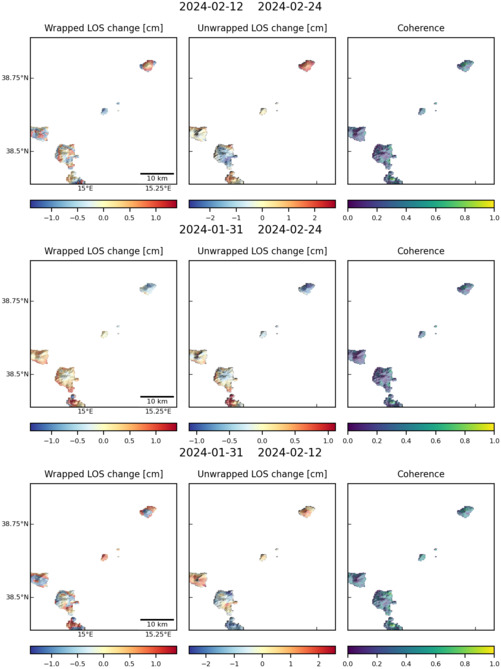Observations of Deformation
| Volcano number: | 211041 |
|---|---|
| Region: | Mediterranean and W. Asia |
| Country: | Italy |
| Geodetic measurements? | Yes |
| Deformation observation? | Yes |
| Measurement method(s): | GPS - continuous, GPS - campaign |
| Duration of observation: | 1997 to 2007 |
| Inferred cause(s) of deformation: | Hydrothermal |
| Characteristics of deformation: | Panarea has no known Holocene eruptions. Esposito et al. (2010): Panarea volcano was considered extinct until November 3, 2002, when a submarine gas eruption began in the area of the islets of Lisca Bianca, Bottaro, Lisca Nera, Dattilo, and Panarelli, about 2.5 km east of Panarea Island.The compositions of the 2002 gases and their isotopic signatures suggested that the emissions originated from a hydrothermal/geothermal reservoir fed by magmatic fluids. |
| Reference(s): | Smithsonian Institution Global Volcanism Program http://www.volcano.si.edu/volcano.cfm?vn=211041 |
| Esposito, A., Anzidei, M., Atzori, S., Devoti, R., Giordano, G., & Pietrantonio, G. (2010). Modeling ground deformations of Panarea volcano hydrothermal/geothermal system (Aeolian Islands, Italy) from GPS data. Bulletin of Volcanology, 72(5), 609-621. | |
| Anzidei M, Baldi P, Casula G, Riguzzi F, Surace L (1995) La rete Tyrgeonet. Suppl Bol Geod Sc Aff LIV, 2 Istituto Geografico Militare Italiano | |
| Location: | 38.63, 15.07 |
| REST API endpoint (JSON): | https://comet.nerc.ac.uk/wp-json/volcanodb/v1/volcano/5268 |
Latest Sentinel-1 Data

Size: 501px x 669px (63.04 KB)

Size: 501px x 668px (64.07 KB)

Size: 501px x 669px (63.54 KB)
